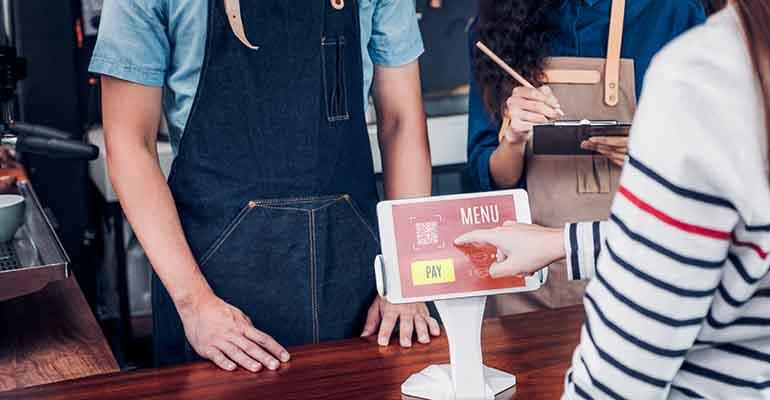Just when things were starting to settle down with the pandemic, restaurants have a new problem: inflation. Increasing energy prices, strong consumer demand and supply chain disruptions have driven inflation to highs not seen since the early 1980s.
The restaurant industry — still fragile after two full years of pandemic restrictions and waves of Covid-19 infections — must act quickly to prevent another crisis. Many restaurants invested heavily in technological advancements over the past two years to accommodate demand for off-premises dining. Now it’s time for operators to think even more strategically and long term about how they can leverage technology to lower costs and staff turnover and increase efficiency and ROI.
Lowering overall operational costs is the smartest, most effective way to fight inflation. At the same time, operators must continue to deliver customized experiences that establish trust and brand loyalty. In other words: It’s all about doing more with less while working smarter, not harder. Here are three ways restaurants can use technology to help fight inflation and streamline operations for the future.
Native ordering channels are a necessity
Because delivery and off-premises dining exploded in popularity during the pandemic, many restaurants had to piecemeal to-go programs in order to stay in the game, including partnering with third-party delivery services (3PDs) such as UberEats, DoorDash And Grubhub. This was a lifeline for restaurants who either didn’t have their own delivery programs or were overwhelmed with the volume of to-go orders during a time when they were also short on staff. Two years in, however, restaurants should be leaning heavily on their own native apps and ordering platforms.
First-party data is the key to understanding — and effectively marketing to — your customer base. The only way to ensure unfettered access to this valuable information is to collect it yourself. Additionally, some 3PDs charge as much as 30 percent in delivery fees. While it may not be feasible to eliminate these services altogether, it’s imperative to offer customers alternative channels from which to order, such as directly from the brand website or native app, to circumvent some of these fees.
Implement consumer-facing technologies in the front-of-house
Consumer-facing technologies such as mobile apps, self-order kiosks and food lockers can help operators lower labor costs and manage staffing fluctuations. Because customers can order and customize whatever menu item they like without fear of judgment or feeling rushed, customers tend to spend more at kiosks and online. They can take their time choosing exactly which items they want, which increases their overall satisfaction with the experience. In addition, technology offers the upsell every single time; it doesn’t forget or let this important profitability practice fall to the wayside during busy times.
Self-order options are also considered a safer method of ordering and receiving food, since they do not require close contact with another person. Operators should provide hand sanitizer for customers to use and make sure these machines are cleaned regularly, which increases transparency and brand trust.
Invest in back-of-house technologies that promote consistency and food safety
Even before the pandemic, front-of-house technologies were gaining popularity and food safety was a constant concern. Now that restaurant operators see how profitable the right tech stack can be, they’re becoming more open to the idea of tech in other areas of the restaurant, too.
Smart kitchens and IoT in the back-of-house can take operational efficiency to the next level by reducing food waste, maintaining a high level of product consistency and making employees’ jobs easier and safer. Using apps, tablets or digital displays, for instance, eliminates the need for paper schedules, task lists and recipe cards, which can be unsanitary and hard to read. Sensors can monitor coolers and freezers, ensuring appliances stay within a designated temperature range. IoT-connected kitchen equipment can alert operators when it’s time for maintenance and even clean itself. All of these little improvements increase efficiency and improve the bottom line significantly over time.
Now that the restaurant industry has discovered the power of technology to simultaneously increase profitability and customer satisfaction, operators can use this knowledge not only to help fight the current inflation problem, but to recession-proof their businesses down the road. If there is anything the past two years have shown, it’s that a problem we may not even be aware of may be lurking around the corner. With the right tech stack in place, operators can be nimbler in navigating ongoing and future challenges.
AUTHOR BIO
Matt Carinio is the VP of Strategy & Consulting at Bounteous, a digital growth partner for the restaurant and c-store industries that helps brands like Domino’s, Panda Express and Wingstop drive incremental revenue through digital experiences.





